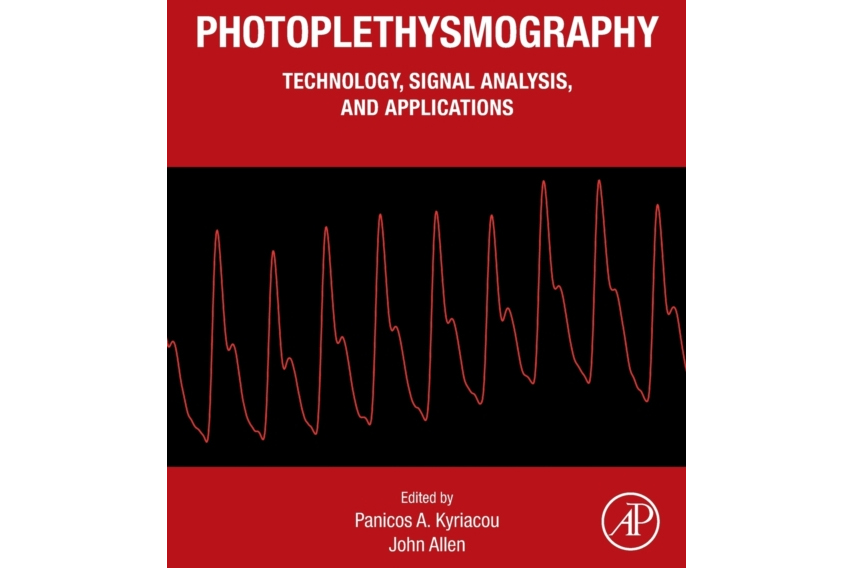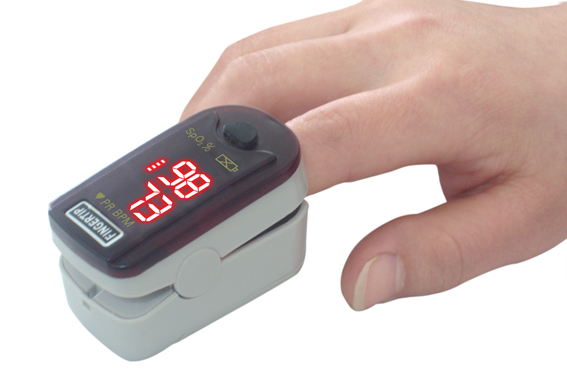City’s Professor of Biomedical Engineering also comments on issues around racial bias in measurements taken with oximeters.
By Mr John Stevenson (Senior Communications Officer), Published
City’s Professor of Biomedical Engineering, Professor Panicos Kyriacou and Coventry University’s Professor of Biosensors and Bioinstrumentation, Professor John Allen, have co-edited Photoplethysmography: Technology, Signal Analysis, and Applications (Elsevier).
It is the first comprehensive volume on the theory, principles, and technology (sensors and electronics) of photoplethysmography (PPG).
 PPG is defined as a simple and low-cost vascular optical technique that can be used to detect blood volume changes in the microvascular bed of tissue. It is often used non-invasively to make measurements at the skin surface.
PPG is defined as a simple and low-cost vascular optical technique that can be used to detect blood volume changes in the microvascular bed of tissue. It is often used non-invasively to make measurements at the skin surface.
The technique was discovered in the early 1930s and over the years it has been established as one of the most basic optical technologies in healthcare.
There is considerable global academic and industrial interest in PPG, which is utilised extensively in pulse oximeter devices, wearable sensors - including personal health monitors and watches, imaging systems, and also bespoke research devices for targeted cardiovascular assessment.
Recent advancements in signal processing technology, including machine learning and AI, have also opened up new and exciting opportunities in PPG-based medical diagnostics.

The new book provides a detailed description of the current state-of-the-art technologies/optical components enabling the extreme miniaturization of such sensors, as well as comprehensive coverage of PPG signal analysis techniques including machine learning and artificial intelligence. It also outlines the wide range of PPG applications in healthcare, with a strong focus on the contribution of PPG in wearable sensors and PPG for cardiovascular assessment.
Following the recent news from the UK Health Secretary (Sajid Javid) regarding medical device racial bias, especially from pulse oximetry, Professor Kyriacou has also commented that despite the tremendous contributions of pulse oximeters in healthcare, over the years there have been reports on the various limitations of pulse oximeters one of which relates in their capability to accurately measure SpO2 in patients with different skin pigmentation.
Very recently, and due to the Covid-19 pandemic, where the deterioration of blood oxygenation is one of the primary symptoms of the disease, and hence the need for technology which can reliably and accurately measure blood oxygenation in the clinical and home setting, the questions about pulse oximeter technology and its accuracy when used in people with different skin pigmentation have resurfaced again.
Professor Kyriacou highlighted that “It is surprising that through the decades only a handful of studies (published in peer reviewed journals) have been conducted to investigate this phenomenon (i.e., the effect of skin pigmentation on the accuracy of pulse oximetry). All these studies calculated bias (SpO2 – SaO2) between a pulse oximeter (SpO2) and the gold standard blood gas analyser (SaO2) and precision (standard deviation, SD) for an oxygen saturation range between 60% - 100% to; a) investigate the correlation between pulse oximetry readings and skin pigmentation, and b) compare bias using different pulse oximeters. “

The results of these studies suggest that SpO2 overestimates measured SaO2 in individuals who have dark skin, especially at low blood oxygen saturations. The challenges and limitations of these studies are many, especially the lack of rigorous and consistent methodology. For example, most of the studies recruited a low number of participants which does not aid in the rigorous analysis of the results (basically not enough data). Also, the selection criteria of participants with different skin pigmentation varied from study to study. Such variability in methodology can easily lead to inconclusive results.
However, overall, all studies highlight an ongoing need to understand and correct racial bias in pulse oximetry and other forms of medical technology. Given the increased mortality amongst ethnic minority patients during the Covid-19 pandemic (in addition to patient self-monitoring at home), it is possible that the differential accuracy of pulse oximetry could be a contributing factor to this health inequality which needs to be investigate more scholastically.
